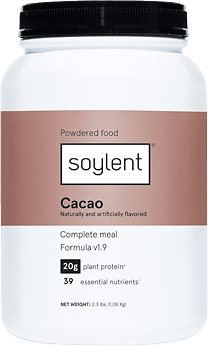Knowledge BaseYou're Questions Answered
How much soy protein powder should I use?
The amount of soy protein powder you should use depends on your individual protein needs, dietary goals, and the specific purpose for which you are using the supplement. It's important to consider factors such as your age, weight, activity level, and overall dietary protein intake. Below are some general guidelines to help you determine an appropriate amount of soy protein powder to incorporate into your diet.
General Guidelines for Soy Protein Powder Intake
1. Daily Protein Requirements
Daily protein needs vary based on factors such as age, sex, weight, and activity level. The Recommended Dietary Allowance (RDA) for protein is approximately 0.8 grams of protein per kilogram of body weight for the average adult. However, individuals with higher protein needs, such as athletes or those engaging in regular resistance training, may require more protein—typically around 1.2 to 2.0 grams per kilogram of body weight1.
2. Typical Serving Size
A typical serving size of soy protein powder is usually around 20 to 25 grams of protein per scoop, which generally translates to one to two scoops per serving. This can vary depending on the brand and product formulation. It's important to check the nutrition label to determine the exact protein content per serving. It is generally recommended to consume no more than two servings of soy protein powder per day, especially if you have a diet high in soy products, due to potential effects on thyroid function2.
3. Meal and Snack Integration
The amount of soy protein powder you use may also depend on how you plan to integrate it into your meals or snacks. For example:
- Shakes and Smoothies: A standard serving size (one to two scoops) can be blended into a shake or smoothie for a quick protein boost.
- Baking and Cooking: When adding soy protein powder to recipes, you may use a smaller amount (such as 1/4 to 1/2 cup) depending on the recipe and desired protein content.
- Meal Replacement: If using soy protein powder as part of a meal replacement, consider incorporating one to two scoops along with other nutrient-dense ingredients to create a balanced meal.
Individual Considerations
While general guidelines can provide a starting point, individual needs can vary. Consider the following:
- Overall Protein Intake: Assess your total daily protein intake from all sources, including food and supplements, to ensure you are meeting but not excessively exceeding your protein needs.
- Dietary Goals: Your goals, such as muscle building, weight loss, or maintenance, can influence how much protein you need. Those aiming for muscle growth may require higher protein intake, while those focused on general health may need less.
- Digestive Tolerance: If you're new to using soy protein powder, start with a smaller amount to assess your body's tolerance and gradually increase as needed.
- Phillips, S. M., & Van Loon, L. J. C. (2011). Dietary protein for athletes: From requirements to optimum adaptation. Journal of Sports Sciences, 29(sup1), S29-S38.
- Messina, M., & Redmond, G. (2006). Effects of soy protein and soybean isoflavones on thyroid function in healthy adults and hypothyroid patients: A review of the relevant literature. Thyroid, 16(3), 249-258.
Related Questions
Protein vs Protein

Your Answer
We are a participant in the Amazon Services LLC Associates Program, an affiliate advertising program designed to provide a means for us to earn fees by linking to Amazon.com and affiliated sites.



